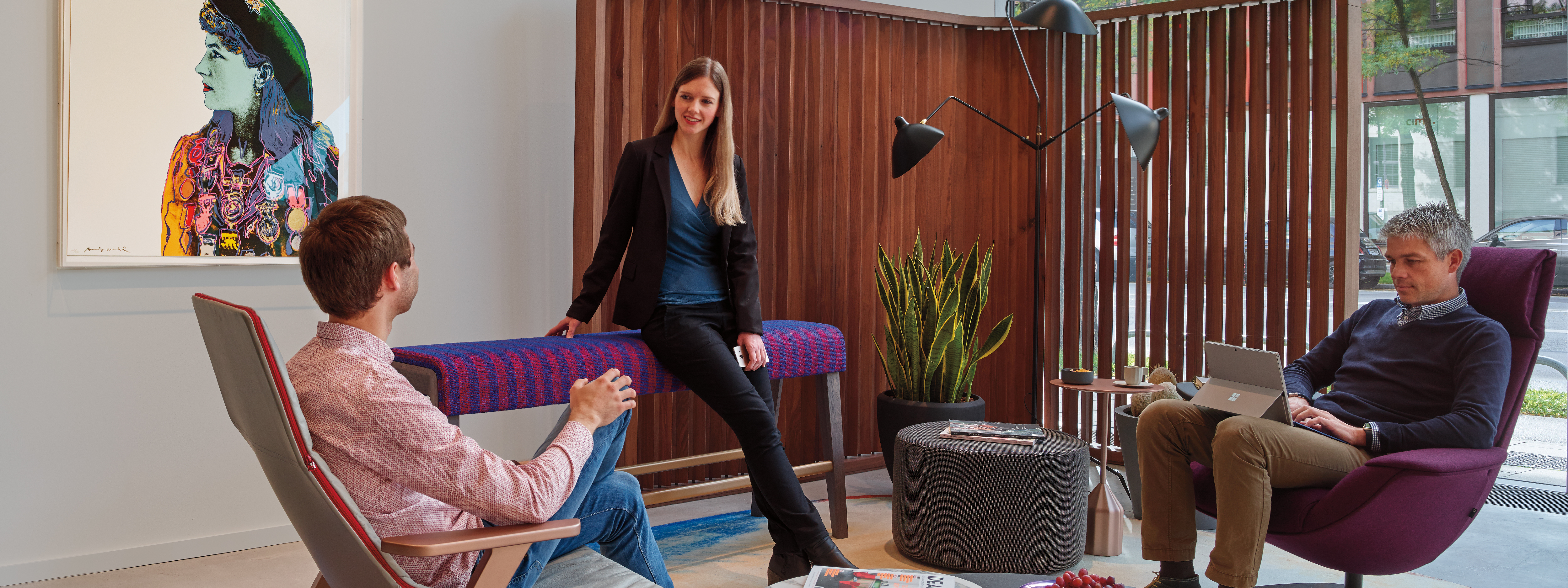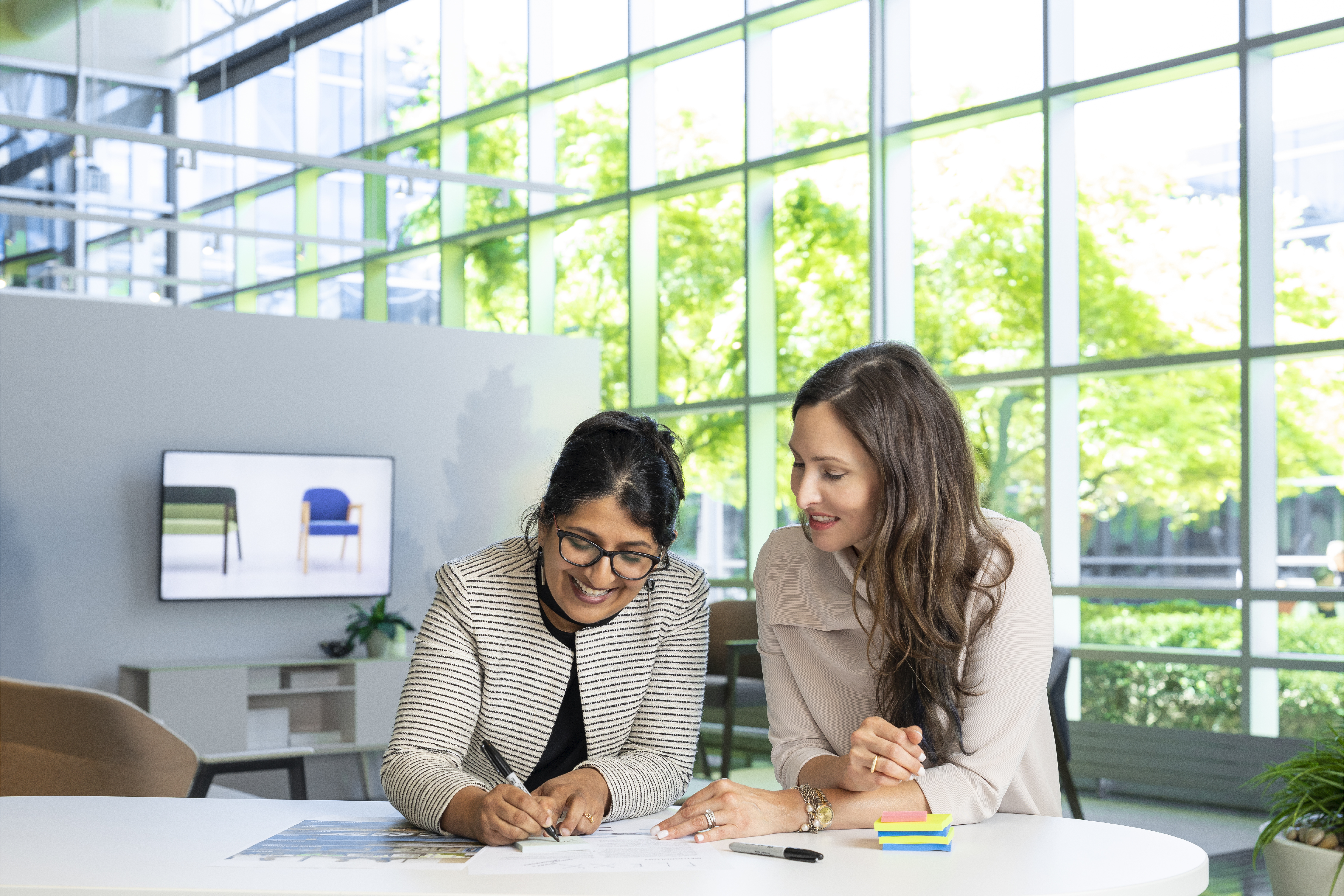 On a regular basis, our clients come to Creative wondering how to improve the physical well-being of their people. Often, conversations focus on a variety of tactics, including implementation of sit-to-stand desks, ergonomic seating, and proper computer support tools. These are just a few of the simple, cost-effective ways that organizations are offering amenities in the workplace designed to support healthy human movement throughout the day.
On a regular basis, our clients come to Creative wondering how to improve the physical well-being of their people. Often, conversations focus on a variety of tactics, including implementation of sit-to-stand desks, ergonomic seating, and proper computer support tools. These are just a few of the simple, cost-effective ways that organizations are offering amenities in the workplace designed to support healthy human movement throughout the day.
We love working with clients that are focused on enriching the physical wellness of its people; it’s great to see more and more focus on this important topic. But we think it’s time to take the discussion on workforce well-being to the next level. How can the workplace support cognitive, social, and physical well-being at the same time?
It’s no surprise that we tend to address physical well-being first. Frankly, it’s the easiest to solve for, and the vast majority of humans have similar needs. It gets a little trickier when we shift the focus to cognitive and social well-being. These are softer, trickier topics and the needs are as varied as each of our personalities. But we do think that there are some key tactics that can be deployed in any organization to help support these hugely important initiatives.
According to a study performed by the US Bureau of Labor Statistics in 2018, about 48% of the U.S. workforce are “knowledge workers”. These workers perform “non-routine cognitive jobs” on a daily basis. In other words, they use their logic and creativity to come up with new ideas. Given this, it’s a little surprising that we’re not thinking more about the cognitive well-being of our people.
Sure, there’s a lot of buzz about workplace mindfulness, and many (diverse) opinions and studies on the benefits and drawbacks of the open office’s impact on thinking. But we think that the key here is offering a pallet of options designed to support a variety of work modes, like focus, renewal, collaboration and stimulation.
Think about your home. We have purpose built environments (kitchens, dens, bedroom, bathrooms) designed to support the various life modes of home. But in the office, all too often we’re given limited options (most often a workstation or a crummy break room) to choose from. Could we offer better choices? Could we offer more variety? We certainly think so.

Another thing that the younger generation has (thankfully) brought to the forefront of workplace design is the value of social interaction and connection. I recall a time when it was frowned upon to have too much chatting going on in the office. Today, social connections form the foundation of organizational culture, and when leveraged correctly, help to advance organizations’ missions.
Today’s corporate holy grail is “innovation”. I believe that true innovation is based largely on social well-being. We know that innovation only occurs when people are collaborating at a high level, openly and freely exchanging and developing ideas. In order to feel comfortable throwing out that crazy idea, you must feel trust and comfort with teammates. Trust is the capital of innovation. And trust is only gained when we connect on a personal level with colleagues.
That’s why it’s important to create alluring spaces that attract people in and set the stage for social connection. Take a look at your break areas. Do they invite people to linger and socialize, or are they designed to get people back to their desks as quickly as possible?
From physical, to cognitive, to social well-being, Creative can help your organization develop strategies to advance these causes. In many cases, the changes can be low-cost and high-impact. Let’s collaborate to develop better well-being in your workplace today.
